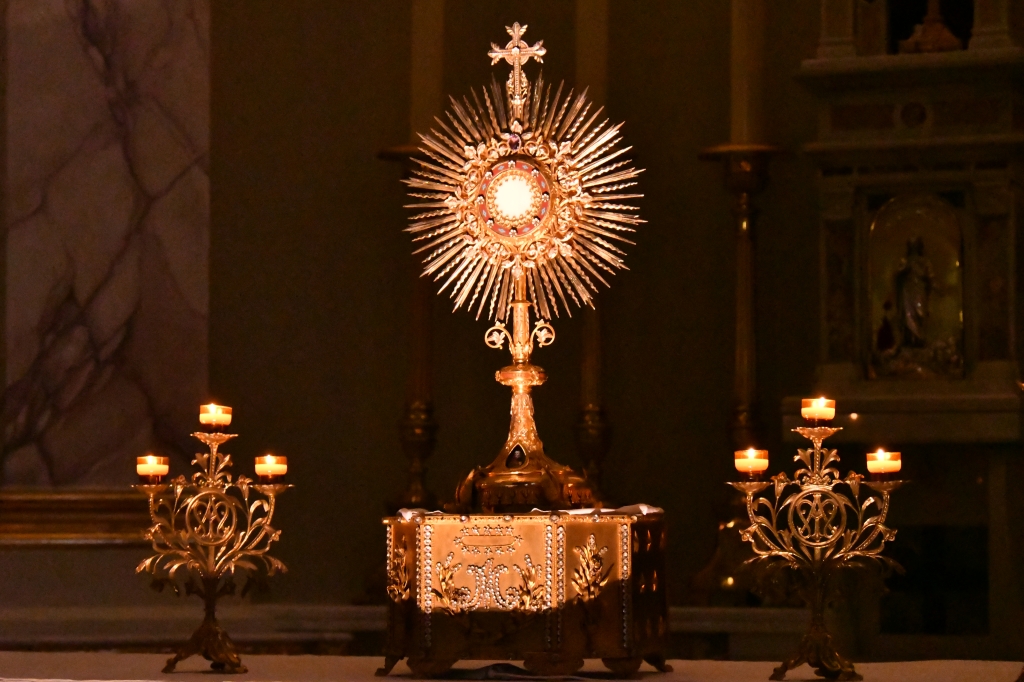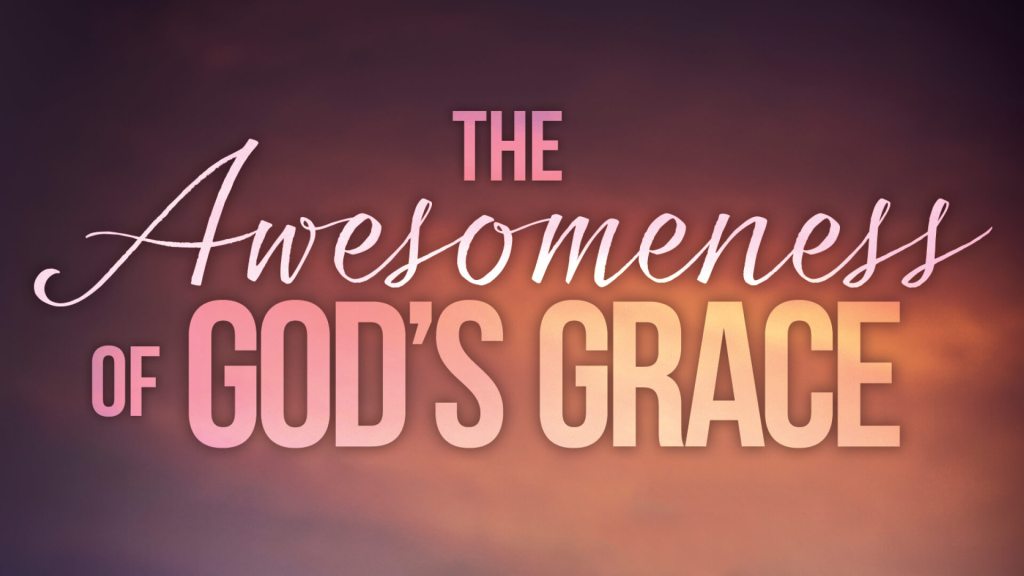Edit: After writing this article and engaging with readers, I believe some clarification is necessary. I, myself, am Anglo-Catholic, and when I write “Anglo-Catholic” in this article, I am referring to my view of it. I am also careful to distinguish that not all Anglo-Catholics hold to transubstantiation, but that I do. I have gone back through and softened some of the generalizations to appease the non-Puseyites:)
___________________________________________________________
The Eucharist holds a central place in Anglo-Catholic worship, and it is more than just a symbolic representation. According to most Anglo-Catholics, the Eucharist is the real presence of Christ. This belief is rooted for some Anglo-Catholics in the concept of transubstantiation, which refers to the transformation of the bread and wine into the body and blood of Christ.
In my view, this understanding of transubstantiation is rooted in the teachings of Jesus himself, as well as the early Church fathers and theologians. The real presence of Christ in the Eucharist is seen as a sacramental encounter with the living Christ. It is not just a symbolic representation or a mere memorial, but a profound spiritual reality. The Eucharist is considered the source and summit of Anglo-Catholic life and worship, as it allows believers to participate in the sacrifice of Christ and receive his real presence for spiritual nourishment.
The belief in the real presence of Christ in the Eucharist is supported by various biblical passages. One of the key passages is found in the Gospel of John, where Jesus says, “I am the living bread that came down from heaven. Whoever eats of this bread will live forever; and the bread that I will give for the life of the world is my flesh” (John 6:51).
In this passage, Jesus speaks of eating his flesh and drinking his blood as a means to receive eternal life. This language is not metaphorical or symbolic, but rather a literal invitation to partake in his body and blood. This understanding is further reinforced by the Last Supper accounts in the synoptic Gospels (Matthew 26:26-28, Mark 14:22-24, Luke 22:19-20) and Paul’s writings in 1 Corinthians 11:23-26.
Early Church fathers and theologians interpreted these passages as evidence of the real presence of Christ in the Eucharist. They understood the Eucharist in the context of Jesus’ own words and actions, affirming that the bread and wine truly become his body and blood. This interpretation has been passed down through the centuries and remains a central belief in Anglo-Catholic teaching.
The belief in the real presence of Christ in the Eucharist has developed throughout history, with roots in the early Christian Church. Early Christian writings and liturgical practices demonstrate the belief in the real presence, as seen in the writings of the Church fathers such as Ignatius of Antioch and Justin Martyr.
However, the belief in the real presence was not without controversy. In the early centuries, there were disputes with Gnostics who denied the physical reality of Christ’s presence in the Eucharist. Later, during the Protestant Reformation, there were debates and disagreements regarding the nature of the Eucharist.
Key figures and events contributed to the establishment and clarification of the belief in the real presence. St. Augustine, a prominent theologian, defended the real presence against various heresies. The Council of Trent in the 16th century reaffirmed the Catholic belief in the real presence and clarified the doctrine of transubstantiation.
Throughout history, the belief in the real presence has remained central to Anglo-Catholic teaching and worship. It is a belief that has been passed down through generations of Anglo-Catholics and continues to be celebrated in the Mass, where believers encounter the living Christ in the Eucharist.
The Eucharist holds profound significance in Anglo-Catholic worship and spirituality. Through the real presence of Christ in the Eucharist, believers experience a deep sense of communion with God and with their fellow believers. It is a transformative encounter that nourishes and sustains the spiritual life of Anglo-Catholics.
The Eucharist is not meant to be a solitary experience but a communal one. It unites believers in the body of Christ and fosters a sense of belonging to the Church. The shared participation in the Eucharist strengthens the bonds of community and reinforces the understanding of the Church as the mystical body of Christ.
Furthermore, the Eucharist is seen as a source of grace and spiritual nourishment. It is believed to have the power to heal, sanctify, and transform the lives of believers. Through the Eucharist, Anglo-Catholics receive the real presence of Christ, who is the source of all grace and the ultimate source of spiritual sustenance.
The Eucharist is not just a ritual or a symbol but a sacrament, a visible sign of an invisible reality. It is through the Eucharist that Anglo-Catholics encounter the living Christ and receive his real presence. This encounter is transformative, calling believers to a deeper relationship with Christ and a life of discipleship.
The Eucharist is celebrated in the context of the Mass, where the bread and wine are consecrated by a priest and offered to the faithful. The Eucharistic celebration includes prayers, readings from Scripture, and the reception of the Eucharist by the faithful. It is the pinnacle of the liturgical life of the Church and the source of spiritual nourishment for Anglo-Catholics.
The Anglo-Catholic belief in the real presence of Christ in the Eucharist differs from other Christian perspectives on the Eucharist. While many Anglo-Catholics believe in the literal transformation of the bread and wine into the body and blood of Christ through transubstantiation, some Protestant denominations hold a more symbolic or memorial view.
For example, some Protestant denominations view the Eucharist as a symbolic representation of Christ’s sacrifice on the cross and his presence among believers. They may see the bread and wine as mere symbols or reminders of Christ’s body and blood, rather than a literal presence.
Other Christian traditions, and some Anglo-Catholics, may hold beliefs such as consubstantiation, which suggests that the body and blood of Christ coexist with the bread and wine in the Eucharist. There are also beliefs in a spiritual presence of Christ in the Eucharist.
It is important to acknowledge both the differences and the areas of commonality among different Christian traditions regarding the Eucharist. While there may be theological disagreements, there is often a shared reverence for the Eucharist as a sacrament and a recognition of its significance in the life of believers.
Respectful dialogue and understanding are crucial in ecumenical discussions on this topic. It is an opportunity for Christians of different traditions to learn from one another, appreciate their unique perspectives, and seek common ground in their shared faith in Christ.
Encountering Christ in the Eucharist is a deeply personal and transformative experience for many Anglo-Catholics. It is not just a theoretical belief but a reality that is encountered and experienced in the celebration of the Mass.
Personally, I have been profoundly moved by the real presence of Christ in the Eucharist. The experience of receiving the body and blood of Christ has brought me a sense of peace, joy, and spiritual nourishment. It is a moment of encounter with the living Christ, where I feel his presence and experience his love and grace.
Through scripture, tradition, and personal experiences, I am convinced of the reality of the real presence of Christ in the Eucharist. It is not something to be taken lightly or approached casually. Rather, it is an invitation to approach the Eucharist with openness, reverence, and a deep desire for communion with Christ. The transformation that occurs in the Eucharist is something I carry with me in daily life.
I would encourage readers to explore the spiritual richness and transformative power of the Eucharist in their own lives. Approach the Eucharist with an open heart and a willingness to encounter Christ in a personal and profound way. Allow the real presence of Christ to nourish and sustain your faith, and let it transform you into a more faithful disciple of Christ.
In conclusion, the real presence of Christ in the Eucharist is a profound mystery of faith in the Anglo-Catholic tradition. It is not just a symbolic representation, but the actual presence of Christ. This belief is rooted, for me at least, in the concept of transubstantiation, where the bread and wine become the body and blood of Christ.
The real presence of Christ in the Eucharist is a sacramental encounter with the living Christ. It is supported by biblical passages, interpreted by early Church fathers and theologians, and has developed throughout history. The Eucharist holds significant meaning in Anglo-Catholic worship, fostering communion with God and fellow believers.
While the Anglo-Catholic belief in the real presence may differ from other Christian perspectives on the Eucharist, there are areas of commonality and shared reverence. Encountering Christ in the Eucharist is a personal and transformative experience that invites believers to deepen their relationship with Christ and live as faithful disciples.
May we continue to deepen our understanding and appreciation of the real presence of Christ in the Eucharist, and actively participate in the profound mystery of the Eucharist.





Leave a comment